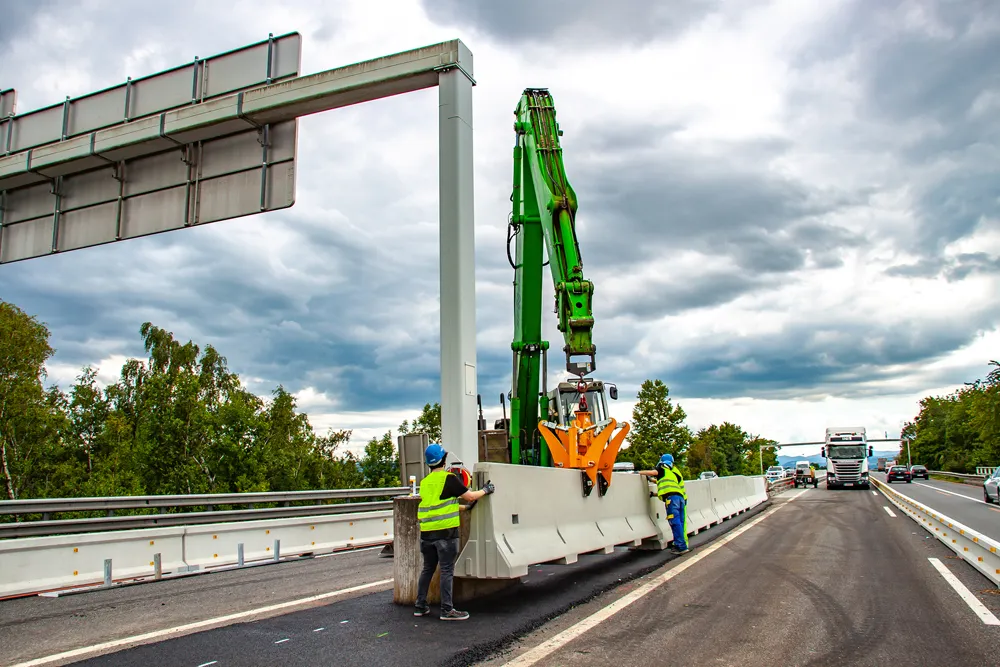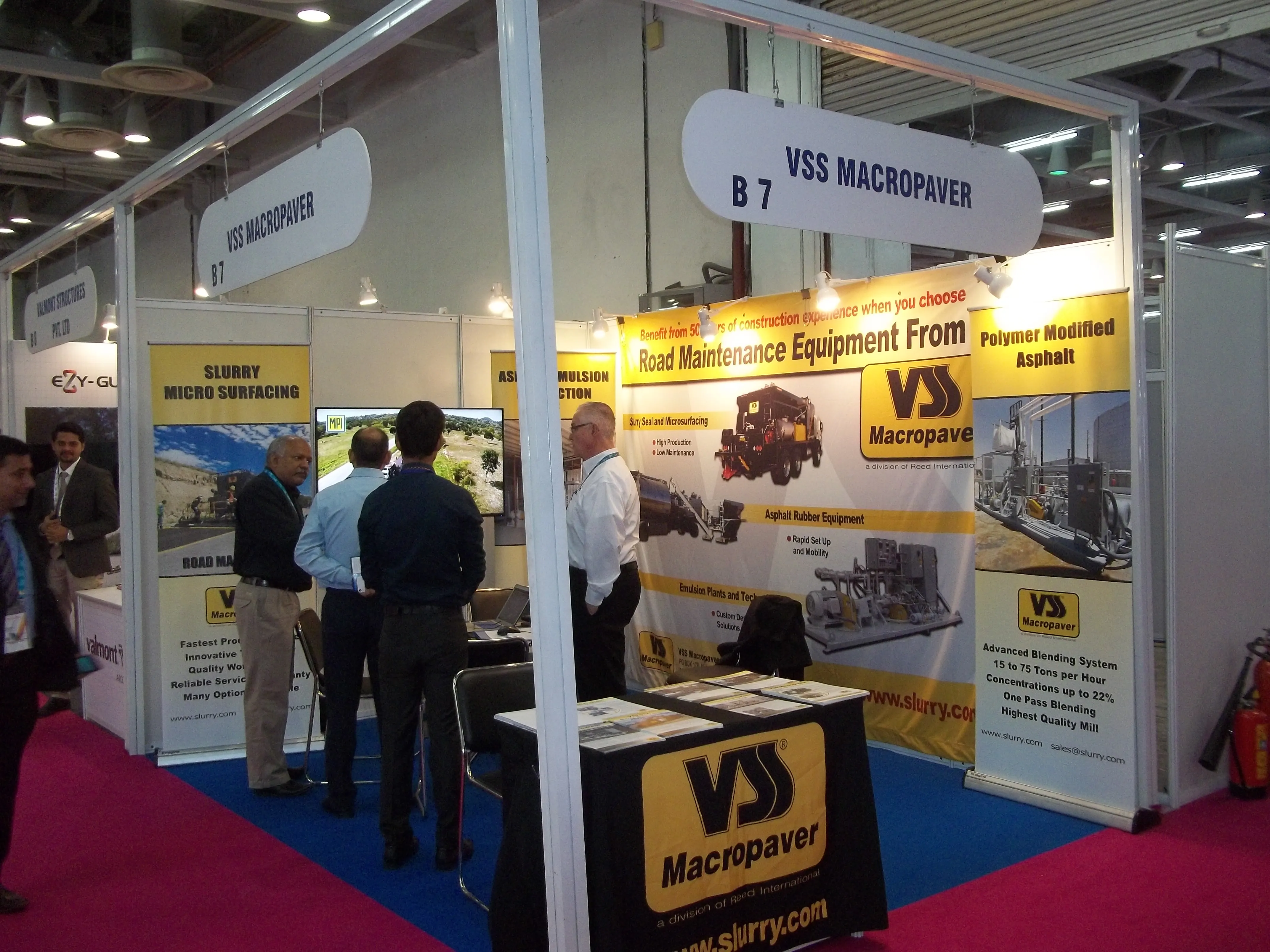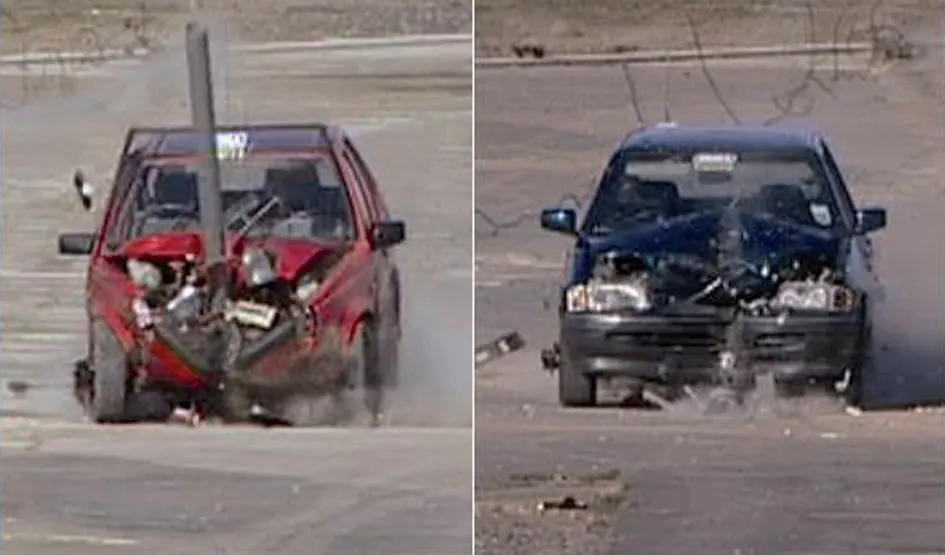Italian company AMS explains how its crashworthy end terminals act like a crash cushion
Industry AMS (Automation Manufacturing Services) has developed a crashworthy end terminal tested according to part 7 of the EN 1317 that is classified as a double-sided and bi-directional end terminal.
Starting from the European version of the terminal, and based on the same architecture, AMS has designed the SMA (Safety Modular Absorber) as a reinforced end-terminal in order to be complaint with both the MASH and
January 25, 2017
Read time: 4 mins

Italian company AMS explains how its crashworthy end terminals act like a crash cushion
7403 Industry AMS (Automation Manufacturing Services) has developed a crashworthy end terminal tested according to part 7 of the EN 1317 that is classified as a double-sided and bi-directional end terminal.
Starting from the European version of the terminal, and based on the same architecture, AMS has designed the SMA (Safety Modular Absorber) as a reinforced end-terminal in order to be complaint with both the MASH and NCHRP 350 standards.
In particular, this reinforced version of end terminal was already able to protect against side impacts from a 2tonne pickup truck (TL 3.37) and the frontal impact from a 2.27tonnes (TL 3.31).
From the images it is clear the vehicles are well decelerated and re-directioned and more importantly that no part of the end terminal during the impact acts as a hazard for the vehicle.
Technology used by the SMA end terminal to absorb the kinetic energy of the vehicle is based on the plastic deformation of steel elements, named crashboxes. Their design maximises energy absorption. But it and also allows the device to be shorter than otherwise and so they become useful where barrier space is limited. Shorter devices also mean easier delivery logistics.
The SMA for the 110km/h class or the TL3 class is less than 6m long, meaning more units fit into a standard 12.2m (40-foot) logistics container. The SMA end terminal is also delivered fully assembled and can be connected to the ground by posts screwed into a base metal plate that is a part of the device.
The base metal plate connects the posts in a way that they can work all together upon impact. This feature allows installation of the SMA end terminal as a stand-alone system – it can sustain impact even if it is not connected to a longitudinal barrier.
The stand-alone aspect means it can be installed on a concrete base using standard anchors or a special metal frame with threaded bushings (supplied by AMS) that can be embedded in the concrete base.
Thanks to its crashbox construction, the SMA end terminal can also act as a collapsing beam. The beam can collapse along its axis but it also has a significant bending stiffness that allows it to sustain side impacts.
In order to meet the requirement that a safety device should have predictable deformation behaviour, a guide with a trolley and a rail allows only longitudinal deformation of the collapsing beam.
This rail has a double ‘T’ profile of steel that engages a rigid trolley also made of steel. The only allowed movement between the rail and the trolley is the longitudinal displacement, forbidding vertical and lateral displacement and also any kind of vehicle rotation. The trolley is then connected to the collapsing beam. The guide acts as a constraint for the deformation of the collapsing beam.
Some crash barrier systems on the market are based on the extrusion of a double or triple beam. Upon impact the forced extrusion of the steel beam causes a bending deformation. The displacement is very difficult to control and the final position of the deformed beam is not easily predicted.
However, the SMA end terminal, due to the rigid guide, remains in place after impact of the vehicle. Some end terminals on the market absorb energy through a planned fracture, whereas the SMA end terminal uses only plastic deformation of steel elements without any rupture of collapsing elements.
The characteristics described above render the SMA terminal the first device that at the same time can be used as a terminal or a crash cushion. In fact, SMA end terminal is also tested according to the EN 1317-3 and has the CE mark for a crash cushion. In one complete system we have a device compliant with European and US standards for both terminal and crash cushion.
Starting from the European version of the terminal, and based on the same architecture, AMS has designed the SMA (Safety Modular Absorber) as a reinforced end-terminal in order to be complaint with both the MASH and NCHRP 350 standards.
In particular, this reinforced version of end terminal was already able to protect against side impacts from a 2tonne pickup truck (TL 3.37) and the frontal impact from a 2.27tonnes (TL 3.31).
From the images it is clear the vehicles are well decelerated and re-directioned and more importantly that no part of the end terminal during the impact acts as a hazard for the vehicle.
Technology used by the SMA end terminal to absorb the kinetic energy of the vehicle is based on the plastic deformation of steel elements, named crashboxes. Their design maximises energy absorption. But it and also allows the device to be shorter than otherwise and so they become useful where barrier space is limited. Shorter devices also mean easier delivery logistics.
The SMA for the 110km/h class or the TL3 class is less than 6m long, meaning more units fit into a standard 12.2m (40-foot) logistics container. The SMA end terminal is also delivered fully assembled and can be connected to the ground by posts screwed into a base metal plate that is a part of the device.
The base metal plate connects the posts in a way that they can work all together upon impact. This feature allows installation of the SMA end terminal as a stand-alone system – it can sustain impact even if it is not connected to a longitudinal barrier.
The stand-alone aspect means it can be installed on a concrete base using standard anchors or a special metal frame with threaded bushings (supplied by AMS) that can be embedded in the concrete base.
Thanks to its crashbox construction, the SMA end terminal can also act as a collapsing beam. The beam can collapse along its axis but it also has a significant bending stiffness that allows it to sustain side impacts.
In order to meet the requirement that a safety device should have predictable deformation behaviour, a guide with a trolley and a rail allows only longitudinal deformation of the collapsing beam.
This rail has a double ‘T’ profile of steel that engages a rigid trolley also made of steel. The only allowed movement between the rail and the trolley is the longitudinal displacement, forbidding vertical and lateral displacement and also any kind of vehicle rotation. The trolley is then connected to the collapsing beam. The guide acts as a constraint for the deformation of the collapsing beam.
Some crash barrier systems on the market are based on the extrusion of a double or triple beam. Upon impact the forced extrusion of the steel beam causes a bending deformation. The displacement is very difficult to control and the final position of the deformed beam is not easily predicted.
However, the SMA end terminal, due to the rigid guide, remains in place after impact of the vehicle. Some end terminals on the market absorb energy through a planned fracture, whereas the SMA end terminal uses only plastic deformation of steel elements without any rupture of collapsing elements.
The characteristics described above render the SMA terminal the first device that at the same time can be used as a terminal or a crash cushion. In fact, SMA end terminal is also tested according to the EN 1317-3 and has the CE mark for a crash cushion. In one complete system we have a device compliant with European and US standards for both terminal and crash cushion.









